Introduction: In this article, Gena Philibert-Ortega shows how helpful obituaries – even very short ones – can be with your family history research. Gena is a genealogist and author of the book “From the Family Kitchen.”
As a family historian, what’s your favorite type of newspaper article? I would guess the obituary is at least one of your favorites. Why? Obituaries have long been an important source for researchers seeking information for their family history.
However, obituaries can seem like a shot in the dark. Some are longer and more detailed than others. A lengthy obituary can help us learn more about our ancestor and their extended family. Unfortunately, not all of us are lucky enough to find an obituary that outlines numerous facts about our ancestor. That’s ok because even a short obituary is an important find.
Anatomy of an Obituary
How can an obituary help your family history research? That might seem obvious, but consider all that an obituary can detail:
- Name of deceased
- Birth date/place
- Death date/place
- Cause of death
- Burial information (cemetery, funeral details, minister officiating)
- Address of residence
- Life facts (religious affiliation, membership affiliation, occupation, schools attended, hobbies, accomplishments)
- Survivors (spouse, children, siblings, parents, grandparents)
- Family that are predeceased (spouse, parents, children)
- Poem (to express thoughts of family)
- Photo (most likely found in more modern newspapers, or for more well-known individuals)
Obituary length, content, and accuracy differ depending on the newspaper’s guidelines, cost, and who the informant was. We never know who exactly provided the information for the obituary, and whether it was written/edited by the newspaper, a funeral home, or a family member. Keep this in mind as you “fact check” your ancestor’s obituary.
Hitting the Obituary Jackpot
A lengthy obituary may say something about the family who placed it. In some cases, it may mean that the family had the financial means to provide a lengthy memorial for their loved one, as in the case of this 1922 obituary for Mrs. Isabella Houston (1860-1922).
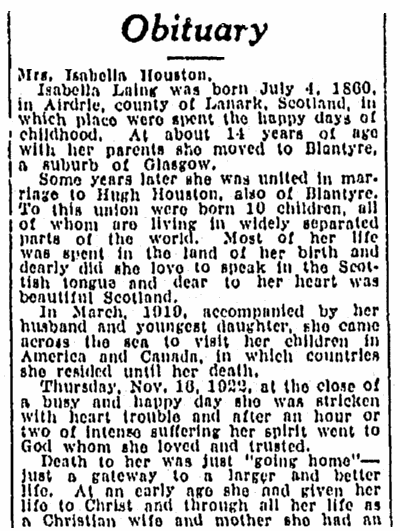
The poem the family added at the end of her obituary would have cost them extra.
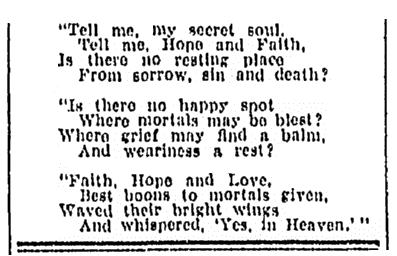
To the right of this obituary, the newspaper listed the rates for placing an obituary: “free within one week of death; after that $1.00… Poetry in obituaries or resolutions, 7 cents per line extra.”
This particular obituary is a great help to the family historian, with information that includes:
- Maiden name
- Birth date/place
- Residence as a teen
- Spouse’s name and place of marriage
- Number of children and their married names
- Immigration date and whom she immigrated with
- Possible cause of death
- Death date
- Religious beliefs
- Survivors’ names and residences
Not all obituaries are going to include this much information. But this example provides an idea of what you might find.
Even when the obituary doesn’t contain all of the information we had hoped for, at the very least it provides a name and death date. While we would prefer an ancestor’s death to be documented in detailed paragraphs, more often than not, that simply isn’t the case.
Even Just a Name and a Date Are Important
Not every obituary answers all your family history questions. But as stated before, even a small mention provides important clues for our research.
This 1939 list of obituaries might seem less than helpful at first glance, but think about what it tells us. Yes, a name and presumably a death date are included. A residential address helps us place the person in a specific location in time. In some cases, a clue to the woman’s marital status is provided with the addition of the words “Mrs.” or “Miss.”
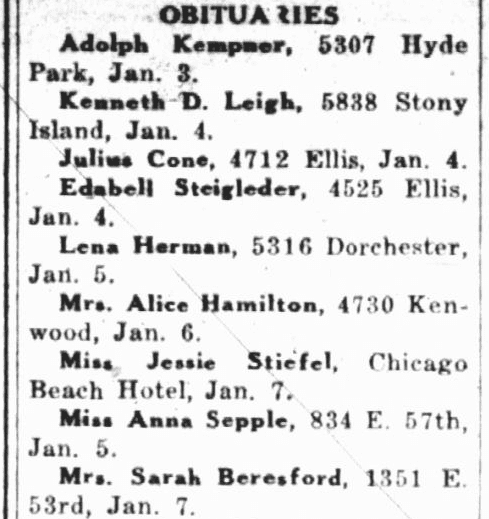
But Wait, There’s More
Whether the obituary provides more questions than answers, or the obituary is more than you could have hoped for, always follow up with additional newspaper research. This 1916 obituary for Mrs. Mary Electa Sweet reports that her funeral was held that day, but lacks a death date. Even with such little information as this obituary provides, we do learn her husband’s name and where she was buried. Additional family history research should include searching for a death certificate and cemetery records.

If we continue searching in the newspaper for more about Mrs. Sweet, we find other results having to do with her death – including a newspaper article printed 14 years after she died! Notice that her obituary appeared in a 1916 Utah newspaper, but this information about delinquent inheritance tax is from a 1930 Idaho newspaper– a good reminder that information about our ancestors can appear in a place or time we weren’t expecting.
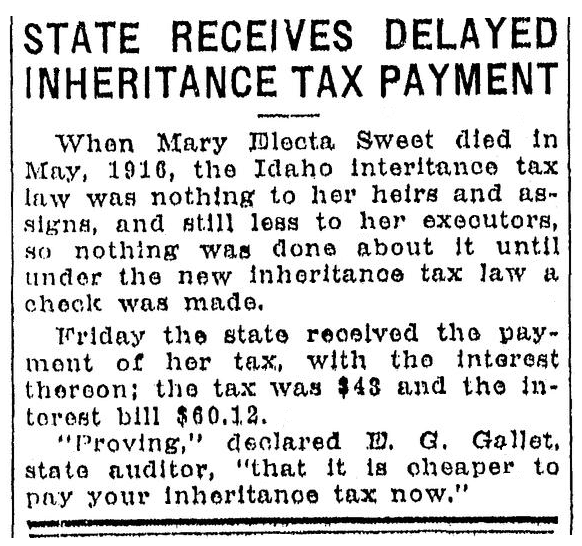
Other notices printed closer to her death involve probate and the guardianship of her children. All these newspaper articles are important in researching her death because they lead us to additional sources. In this case, follow-up courthouse research regarding the probate and guardianship could verify relationships such as names of her children and perhaps her parents or siblings.
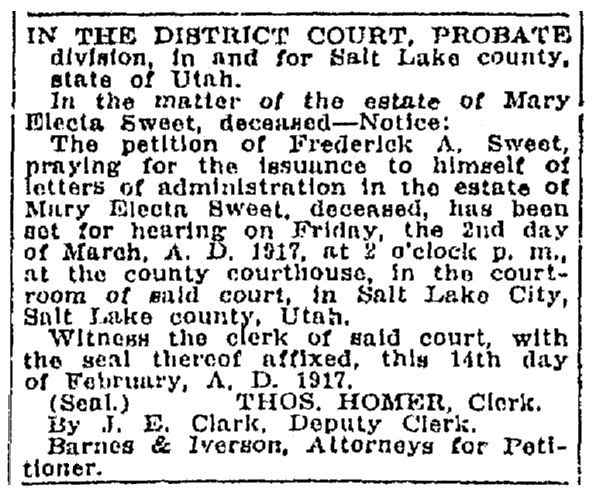
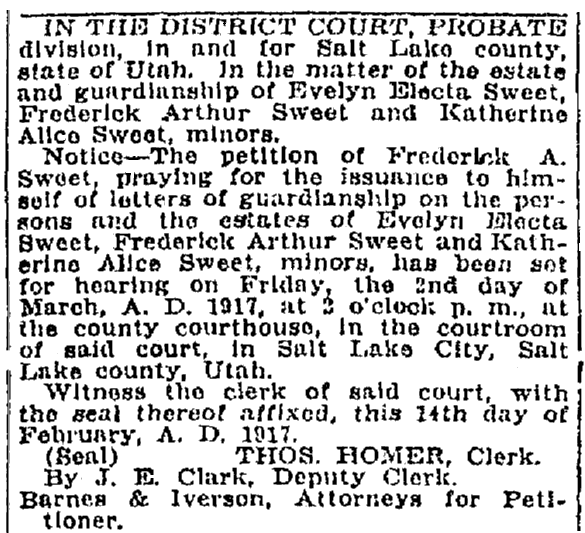
Start Your Search Today!
One of the first searches you conduct when looking for the death of your ancestor should be in a collection of old newspapers, such as GenealogyBank’s Historical Newspaper Archives. Obituaries, whether they provide a little or a lot of information, provide valuable clues that need to be followed up. Start your search today and look for the obituaries and other newspaper articles that document your ancestor’s death – and life.
Related Articles:
